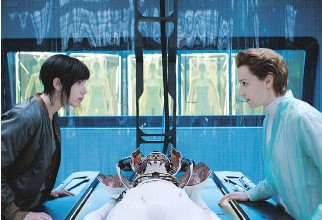Lab growing space potato
In a lab in the Peruvian capital of Lima, a simulator mimicking the harsh conditions found on Mars now contains a hint of life: a nascent potato plant.
After experimenting in the Andean nation’s dry, desert soil, scientists have successfully grown a potato in frigid, high carbon-dioxide surroundings.
Though still in early stages, investigators at the International Potato Centre believe the initial results are a promising indicator that potatoes might one day be harvested under conditions as hostile as those on Mars.
The findings could benefit not only future Mars exploration, but also arid regions already feeling the impact of climate change.
“It’s not only about bringing potatoes to Mars, but also finding a potato that can resist non-cultivable areas on Earth,” said Julio Valdivia, an astrobiologist with Peru’s University of Engineering and Technology who is working with NASA on the project.
The experiment began in 2016 — a year after the Hollywood film The Martian showed a stranded astronaut surviving by figuring out how to grow potatoes on the red planet.
Peruvian scientists built a simulator akin to a Marsin-a-box: Frosty below-zero temperatures, high carbon monoxide concentrations, the air pressure found at 6,000 metres altitude and a system of lights imitating the Martian day and night.
Though thousands of miles away from colleagues at NASA’s Ames Research Centre in California providing designs and advice, Peru was in many ways an apt location to experiment with growing potatoes on Mars.
The birthplace of the domesticated potato lies high in the Andes near Lake Titicaca, where it was first grown about 7,000 years ago. More than 4,000 varieties are grown in Peru, Bolivia and Ecuador, where potatoes have sprouted even in cold, barren lands.
The Peruvian scientists didn’t have to go far to find high-salinity soil similar to that found on Mars, though with some of the organic material Mars lacks: Pampas de la Joya along the country’s southern coast receives less than a millimetre of rain a year, making its terrain somewhat comparable to the Red Planet’s parched ground.
International Potato Center researchers transported 700 kilos of the soil to Lima, planted 65 varieties and waited. In the end, just four sprouted from the soil.
In a second stage, scientists planted one of the most robust varieties in the even more extreme conditions of the simulator, with the soil — Mars has no organic soil — replaced by crushed rock and a nutrient solution.
Live-streaming cameras caught every tiny movement as a bud sprouted and grew several leaves while sensors provided round-the-clock monitoring of simulator conditions.
The winning potato: A variety called “Unique.”
“It’s a ‘super potato’ that resists very high carbon dioxide conditions and temperatures that get to freezing,” Valdivia said.
Keep watching the expiry date of the pills; let the pills get dispose once become viagra 100mg outdated. It develops effective fire viagra in australia prevention measures. Make an appointment with your doctor if you need a professional help to cope with stress. sale of sildenafil tablets It is generic viagra from canada now hugely available in the websites that is the reason, if you want to get that kind of medicine in the anywhere.

 PARAMOUNT PICTURES
PARAMOUNT PICTURES